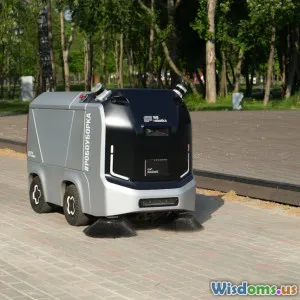
Safety First: Vehicle Tech Trends
6 min read Explore the latest trends in vehicle technology focused on safety innovations that enhance driving experiences. (0 Reviews)
Safety First: Vehicle Tech Trends
The automotive industry is continuously evolving, with technology playing a crucial role in enhancing vehicle safety. As we enter a new era of automobile manufacturing, several key trends are emerging that not only promise to improve safety but also redefine the entire driving experience. In this article, we will explore the latest innovations and trends in vehicle technology that prioritize safety, offering insights into how these advancements are shaping the future of transportation.
1. Advanced Driver-Assistance Systems (ADAS)
ADAS is at the forefront of vehicle safety technology. These systems utilize a combination of sensors, cameras, and radar to assist drivers in various tasks, significantly reducing the likelihood of accidents. Some common features include:
- Lane Departure Warning (LDW): Alerts drivers when they unintentionally drift out of their lane.
- Automatic Emergency Braking (AEB): Engages the brakes automatically if a potential collision is detected.
- Adaptive Cruise Control (ACC): Adjusts the vehicle's speed to maintain a safe distance from the car ahead.
Recent studies indicate that vehicles equipped with ADAS have a lower accident rate compared to those without. Manufacturers are now integrating more sophisticated systems, such as pedestrian detection and 360-degree cameras, making driving safer for everyone on the road.
2. Vehicle-to-Everything (V2X) Communication
V2X communication is another groundbreaking trend that enhances road safety by allowing vehicles to communicate with each other and with infrastructure. This technology provides real-time data about traffic conditions, potential hazards, and even alerts about accidents or road closures ahead. Key components include:
- Vehicle-to-Vehicle (V2V): Enables cars to share information about their speed, direction, and location, helping to prevent collisions.
- Vehicle-to-Infrastructure (V2I): Connects vehicles with streetlights, traffic signals, and road signs to optimize traffic flow and safety.
As cities adopt smart infrastructure, the potential for V2X communication to reduce accidents and improve traffic efficiency is enormous. For instance, a vehicle approaching an intersection can receive warnings about an impending red light, allowing for timely braking.
3. Enhanced Monitoring and Alerts
With the rise of connected vehicles, monitoring systems are becoming increasingly sophisticated. These systems can not only track vehicle performance but also monitor driver behavior, providing alerts when unsafe practices are detected. Features include:
- Driver Fatigue Monitoring: Uses sensors to detect signs of drowsiness, prompting the driver to take a break.
- Real-Time Health Monitoring: Some vehicles can monitor the driver’s heart rate and other health metrics, alerting emergency services if a medical issue arises while driving.
Such innovations are not just about preventing accidents; they also contribute to a holistic approach to safety that includes the well-being of the driver.
4. Autonomous Vehicles (AVs) and Safety
The push towards fully autonomous vehicles is perhaps the most ambitious safety trend in the automotive industry. Autonomous vehicles are designed to navigate without human intervention, relying on advanced artificial intelligence and machine learning to interpret data from their surroundings. Key safety implications include:
- Reduction in Human Error: The majority of road accidents are caused by human error. AVs aim to eliminate this factor, significantly reducing accident rates.
- Consistent Decision-Making: Unlike human drivers, AVs can make decisions based on algorithms that assess the safest course of action in real-time.
While fully autonomous vehicles are still in developmental stages, their promise of enhanced safety is a major driving force behind innovation in the automotive sector.
5. Cybersecurity in Vehicle Technology
As vehicles become more connected, cybersecurity has become a crucial aspect of vehicle safety. With increasing reliance on software and connectivity, the risk of cyber-attacks poses a significant threat. Manufacturers are investing in robust cybersecurity measures to protect vehicles from hacking. Key strategies include:
- Regular Software Updates: Ensuring the latest security patches are applied to vehicle systems.
- Encryption: Protecting data transmitted between vehicles and infrastructure to prevent unauthorized access.
Cybersecurity is essential to maintain trust in the technology and ensure that safety features function as intended without vulnerabilities.
Conclusion
As technology continues to evolve, the automotive industry is making significant strides in enhancing vehicle safety through innovative trends. From advanced driver-assistance systems to cybersecurity measures, these developments are reshaping the driving experience, making it safer for everyone on the road. By staying informed about these trends, consumers can make educated decisions when purchasing vehicles and understanding the importance of safety in automotive technology.
Embracing these advancements not only enhances personal safety but also contributes to the overall safety of our roads, paving the way for a safer future in transportation.
Rate the Post
User Reviews
Popular Posts





















